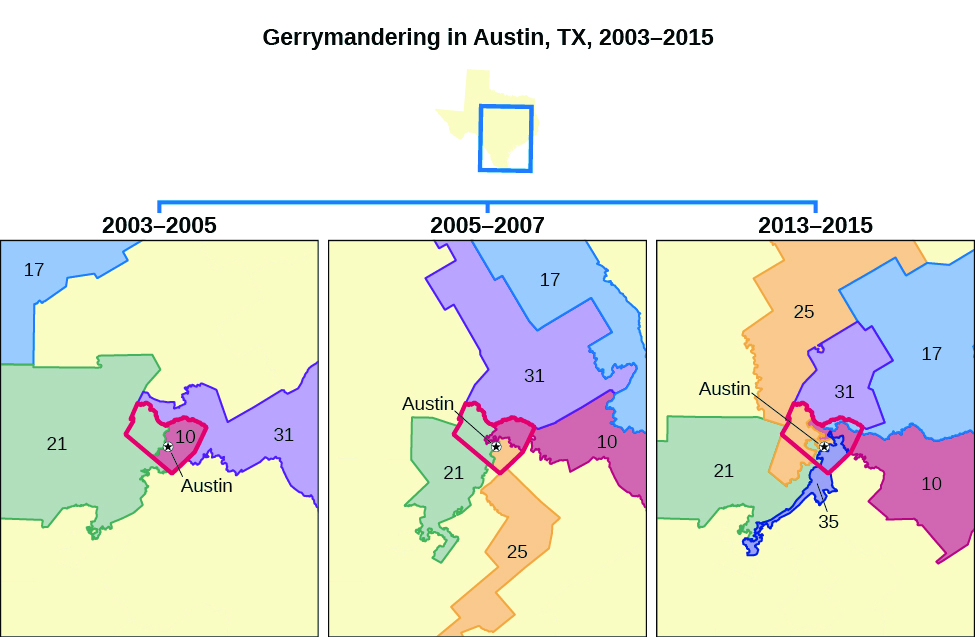| << Chapter < Page | Chapter >> Page > |

In Ohio, one skirts the shoreline of Lake Erie like a snake. In Louisiana, one meanders across the southern part of the state from the eastern shore of Lake Ponchartrain, through much of New Orleans and north along the Mississippi River to Baton Rouge. And in Illinois, another wraps around the city of Chicago and its suburbs in a wandering line that, when seen on a map, looks like the mouth of a large, bearded alligator attempting to drink from Lake Michigan.
These aren’t geographical features or large infrastructure projects. Rather, they are racially gerrymandered congressional districts. Their strange shapes are the product of careful district restructuring organized around the goal of enhancing the votes of minority groups. The alligator-mouth District 4 in Illinois, for example, was drawn to bring a number of geographically autonomous Latino groups in Illinois together in the same congressional district.
While the strategy of creating majority-minority districts has been a success for minorities’ representation in Congress, its long-term effect has revealed a disturbing paradox: Congress as a whole has become less enthusiastic about minority-specific issues. How is this possible? The problem is that by creating districts with high percentages of minority constituents, strategists have made the other districts less diverse. The representatives in those districts are under very little pressure to consider the interests of minority groups. As a result, they typically do not.
What changes might help correct this problem? Are majority-minority districts no longer an effective strategy for increasing minority representation in Congress? Are there better ways to achieve a higher level of minority representation?
The authority to introduce and pass legislation is a very strong power. But it is only one of the many that Congress possesses. In general, congressional powers can be divided into three types: enumerated, implied, and inherent. An enumerated power is a power explicitly stated in the Constitution. An implied power is one not specifically detailed in the Constitution but inferred as necessary to achieve the objectives of the national government. And an inherent power , while not enumerated or implied, must be assumed to exist as a direct result of the country’s existence. In this section, we will learn about each type of power and the foundations of legitimacy they claim. We will also learn about the way the different branches of government have historically appropriated powers not previously granted to them and the way congressional power has recently suffered in this process.

Notification Switch
Would you like to follow the 'American government' conversation and receive update notifications?